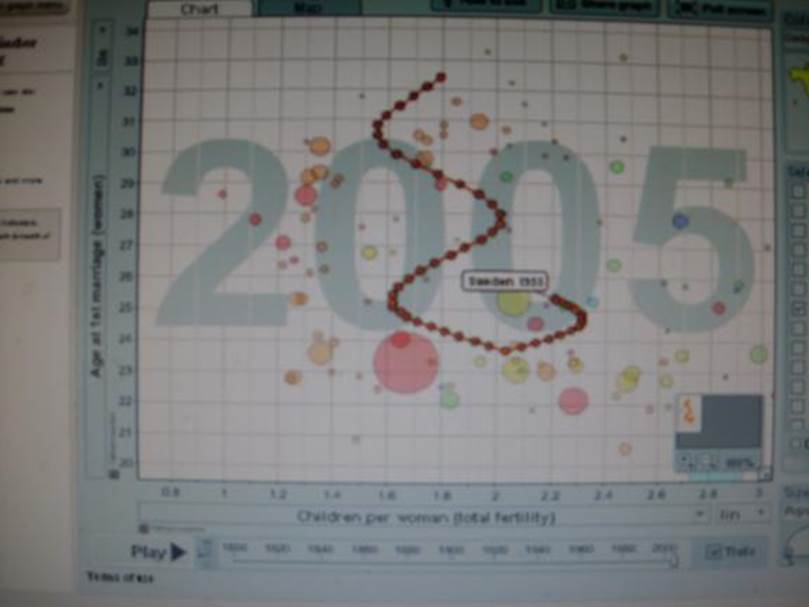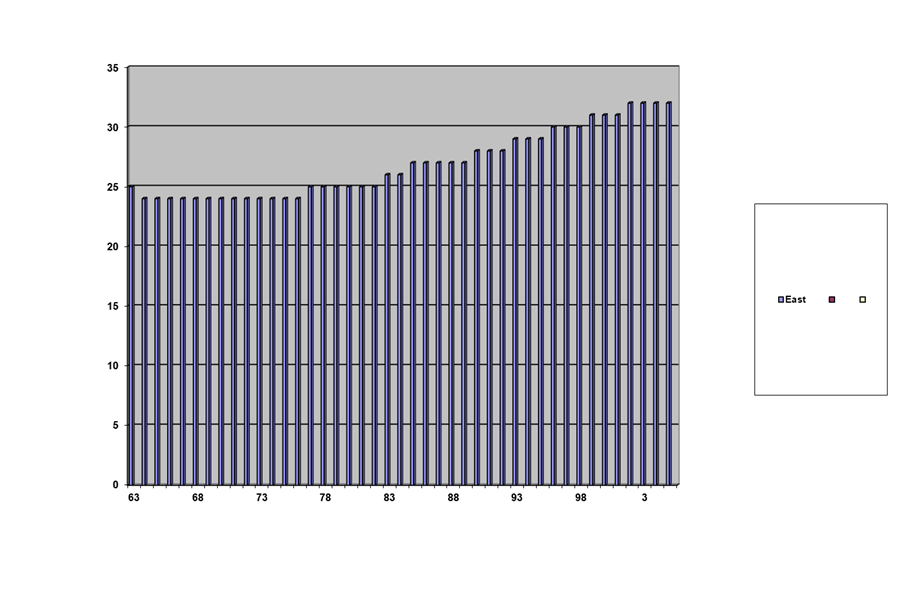Terror 20 Sweden

Dore “Raven”
https://hyperallergic.com/102457/rediscovering-the-dark-splendor-of-gustave-dore-with-edgar-allan-poe/ downloaded Feb 18, 2018
It is the 9th of April 2018. The chase is still on to run down the mechanism for inbreeding depression and for outbreeding depression.
Another of my heroes we have lost recently has been Hans Rosling. He assembled an amazing amount of data about national statistics worldwide and posted the collection on the internet as gapminder.com Alas I cannot find it today, but it was very interesting to watch the statistics play out over time.
For about 30 years birth rates in rich countries have been somewhat below replacement levels and have been reasonably stable. That does not sound so scary. But is there any evidence that a fertility crash is sneaking up on us? Sure. Here is the experience of Sweden between 1955 and 2005 with the births per woman on the horizontal axis and age at first marriage on the vertical axis.

Taken from gapminder.com Each circle is a year. 1955 is where the label is. From there the trace wanders a bit but then fertility drops below 2 children per woman where it mostly remains. No sooner has the fall gone below replacement than the age at first marriage begins to rise. This is typical for developed countries; in some year, varying from country to country, fertility abruptly begins to fall, to go below replacement and then more or less to stabilize but with an immediate rise in age at first marriage for women.
Although fertility, as you can see here, may vary that probably only means that couples are choosing to have their babies sooner or later. We have already seen, most clearly in Iceland, that the actual total number of children is governed entirely by kinship issue.
On the other hand, once the marriage age starts upward, in the context of fertility below replacement, it never turns back. In fact, it never slows down. This is true of all the developed countries, and as we showed with the UN numbers, that means for the entirety of humankind that is visible in the statistics.
This give us the sad opportunity to determine when some country will suffer the fate of the Calhoun mice and experience total fertility collapse, again within the limits of what the statistics can show.
I worked with gapminder until I could list years from 1975 to 2005 and the age of marriage in each year. It rose from 24 to 32 during those 30 years or about one year’s delay for 3.75 calendar years. The graph shows eloquently how implacable is the advance.

1963 25
1964 24
1965 24
1966 24
1967 24
1968 24
1969 24
1970 24
1971 24
1972 24
1973 24
1974 24
1975 24
1976 24
1977 25
1978 25
1979 25
1980 25
1981 25
1982 25
1983 26
1984 26
1985 27
1986 27
1987 27
1988 27
1989 27
1990 28
1991 28
1992 28
1993 29
1994 29
1995 29
1996 30
1997 30
1998 30
1999 31
2000 31
2001 31
2002 32
2003 32
2004 32
2005 32
Assuming the pattern holds, the age of marriage in 2006 should be 33. I am making an assumption here that unmarried women are following the same trend and married women. If that is not true it could skew the results. I assume that by age 38 a woman’s ability to have children drops drastically as menopause approaches. And I am happy to leave out the statistics since 2005 since for several years there has been immigration into Sweden that again probably alters the actual numbers.
So from age 33 to menopause would be 5 years. 5 times 3.75 is 18.75; we’ll call it 19. 19 plus 2005 is 2024. That should be the year that fertility collapses. And in our mostly global culture, and since just about everybody in Sweden is in the productive middle class, that probably holds for the productive middle class worldwide. It will be hard to maintain our high tech civilization once the bbyoungest productive people are fifty years old. The year 2074 may be a bad one.
I have no cure in mind. Maybe cloning will become cheap and safe. Some other fix might be discovered if we were to search diligently. But a simple change in mating strategy does not appear promising; those last fertile women are already among us and have already chosen their permanent partners.
YouTube video directory
Home page.


